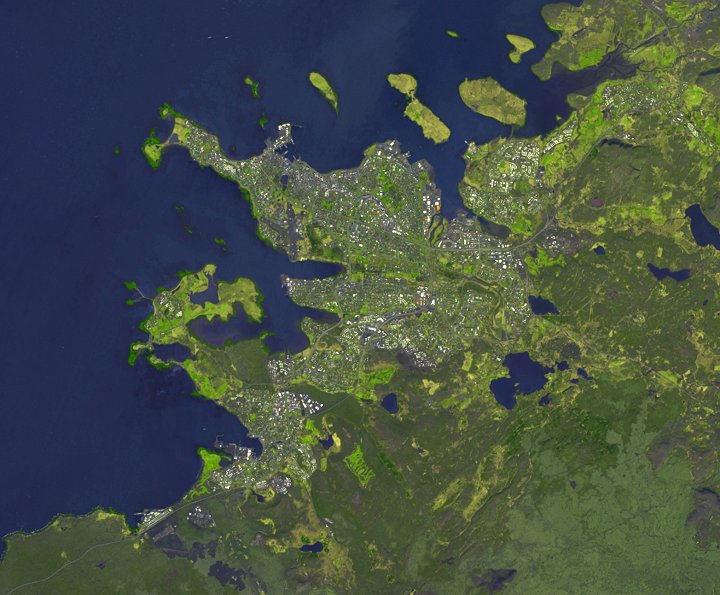| Earth from Space is a free eBook describing our planet from a satellite's perspective. Fore more information, please read the About pages. |

|

Home  Europe Europe  Iceland Iceland  Reykjavik Reykjavik |
|
| See also: Phytoplankton around Iceland | |






|
|
ReykjavikPosition of center of photo (Lat/Long): [64.13333/-21.9333] |
|
  The worldís northernmost capital city, Reykjavik, Iceland, resides on geologically young land. Straddling the mid-Atlantic Ridge, Iceland formed about 16 to 20 million years ago as the American and Eurasian continental plates pulled apart. The islandís location means frequent volcanic eruptions and earthquakes, but the same geothermal activity meets the inhabitantsí energy needs by providing them with hot-water-powered home heating. The worldís northernmost capital city, Reykjavik, Iceland, resides on geologically young land. Straddling the mid-Atlantic Ridge, Iceland formed about 16 to 20 million years ago as the American and Eurasian continental plates pulled apart. The islandís location means frequent volcanic eruptions and earthquakes, but the same geothermal activity meets the inhabitantsí energy needs by providing them with hot-water-powered home heating.
On May 11, 2002, the ASTER sensor on NASAís Terra satellite captured this image of Reykjavik and its surroundings. Resting on a peninsula, the capital city stands out from the nearby landscape thanks to its straight lines, sharp angles, and mostly gray hues. Outside of the city, vegetation appears in various shades of green. As Iceland is geologically young and its climate is cold, sizable plants are rare. Less than one-fourth of Icelandís land surface has continuous plant cover, and the plants consist mostly of low-growing shrubs. Little of Icelandís land surface is cultivated, but such areas appear in bright green in and around Reykjavik. Lakes of varying sizes dot this coastal area, matching the blue of the nearby ocean. One color missing from this shot is white. Although some snow remained in the nearby mountains in May 2002, not much snow lingered on the land around the capital city. Icelandís location near the Gulf Stream gives it a milder climate than its name implies. |
| Source of material: NASA |
Further information: WikiPedia article on Reykjavik
Last Update: 2011-03-30

